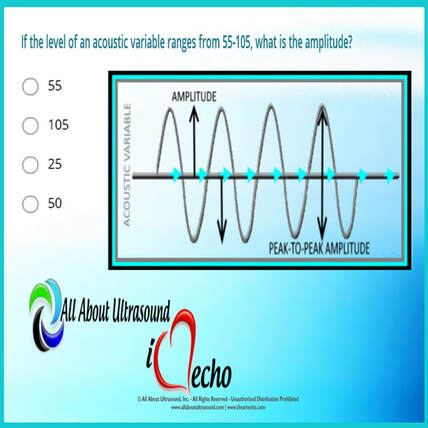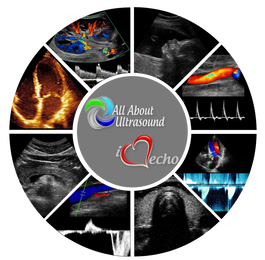Quick Ultrasound Physics Registry Review Tips If the level of an acoustic variable ranges from 55-105, what is the amplitude? You guessed it! The answer is 25. But why? The amplitude is calculated by determining the median between the range values and then calculating the difference between the median and high/low values of the range. Amplitude is the amount of change in an acoustic variable. Amplitude is equal to the difference between average and the maximum or minimum values of an acoustic variable (or half the “peak-to-peak” amplitude). In the example in the question, the median of the range is 80. 80 is 25 above 55 and 25 below 105 - therefore the amplitude is equal to 25. The amplitude of ultrasound waves decrease as they travel through tissue, a phenomenon known as attenuation. For more info on amplitude and ultrasound physics, check out our other ultrasound physics resources. Studying for your ultrasound registry exam? We can help! Our ultrasound registry review courses and quizzes will take your ultrasound skills to the next level!
0 Comments
Leave a Reply. |
Details
Making Waves™All About Ultrasound presents Making Waves™, our ultrasound specific blog and newsletter. Join us here for ultrasound news, cases and more! Don't FORGET YOUR MERCH!Archives
May 2023
Categories
All
|




 RSS Feed
RSS Feed